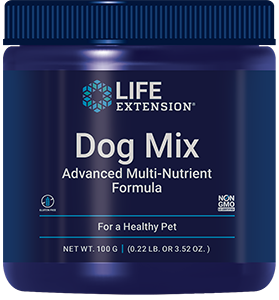 | May 23, 2008 | Luteolin tames the flames | | An article published online on May 19, 2008 in the Proceedings of the National Academy of Sciences reported that the flavonoid luteolin may help reduce inflammation in the brain. Luteolin is found in plants such as green peppers and celery, and has been shown to have an anti-inflammatory property in several cell types other than those of the central nervous system. Researchers at the University of Illinois at Urbana–Champaign, led by Rodney W. Johnson, studied luteolin’s effects in microglia, which are brain cells involved in immune defense. Although the inflammatory cytokines produced by these cells help fight invading micro-organisms throughout the body, the resulting neuroinflammation can destroy neurons, which may contribute to cognitive impairment or neurodegenerative diseases such as Alzheimer’s disease and multiple sclerosis. “One of the questions we were interested in is whether something like luteolin, or other bioactive food components, can be used to mitigate age-associated inflammation and therefore improve cognitive function and avoid some of the cognitive deficits that occur in aging,” Dr Johnson stated. Dr Johnson’s research assistant pretreated two types of microglia with varying concentrations of luteolin, and exposed the cells to lipopolysaccharide to initiate inflammation. She found that luteolin inhibited the production of the pro-inflammatory cytokine interleukin-6 by as much as 90 percent compared with untreated cells. “This was just about as potent an inhibition as anything we had seen previously,” Dr Johnson observed. In another experiment, the researchers gave varying concentrations of luteolin to mice 21 days before injecting them with lipopolysaccharide. When plasma interleukin-6 levels were measured four hours following the injection, mice that received any amount of luteolin were found to have significantly lower levels of IL-6 than mice that did not receive the flavonoid. Those that received the highest concentration additionally experienced a reduction in the transcription of interleukin-6 in the brain’s hippocampus, which is involved with memory and learning. Luteolin’s mechanism was determined to involve the inhibition of JNK phosphorylation. JNK is a protein kinase which activates a transcription factor known as AP-1 needed for interleukin-6 production. “It might be possible to use flavonoids to inhibit JNK and mitigate inflammatory reactions in the brain,” Dr Johnson said. “Inflammatory cytokines such as interleukin-6 are very well known to inhibit certain types of learning and memory that are under the control of the hippocampus, and the hippocampus is also very vulnerable to the insults of aging. If you had the potential to decrease the production of inflammatory cytokines in the brain you could potentially limit the cognitive deficits that result.” | |  |
| Compelling and growing evidence links inflammation and oxidative stress to Alzheimer’s disease. According to the inflammation theory (discussed in dozens of recent clinical trials), inflammatory cytokines gather at the neurons of people who have Alzheimer's. These cytokines set off an inflammatory cascade. The inflammation generates high levels of free radicals that contribute directly to the formation of beta-amyloid plaques. The result is more inflammation, free radicals, and beta-amyloid plaques. Iron has also been linked to the generation of free radicals. Studies have shown that free iron accumulates on the surface of dying neurons, where it generates oxygen-derived free radicals that hasten the spread of the disease (Mandel S et al 2006). The inflammation theory of Alzheimer’s disease is joined by other possible causes, including the excitotoxicity theory. In this theory, high levels of the amino acid glutamate in the brain overstimulate neurons. The overstimulated neurons release inflammatory cytokines. Glutamate excitotoxicity is mediated by N-methyl-D-aspartate (NMDA) receptors. Curcumin is showing excellent early promise as an anti-inflammatory and antioxidant compound in the treatment of Alzheimer’s disease. Studies of animals have shown that curcumin directly inhibits the formation of amyloid plaques (Ringman JM et al 2005). Based on early results, curcumin has generated considerable excitement in the research community. Unlike other nutrients, or even drugs, which tend to target one aspect of Alzheimer's, curcumin has been shown to lower oxidative damage, cognitive defects, damage to neural synapses, and the deposition of amyloid plaques. In addition, it regulates the levels of cytokines in the neurons (Cole GM et al 2004). In fact, studies suggest that curcumin may be even more effective than the over-the-counter NSAIDs ibuprofen and naproxen at inhibiting the accumulation of beta- amyloid in animal models (Yang F et al 2005). As previously discussed, beta-amyloid is involved in the formation of senile neuronal plaques. One method by which curcumin reduces inflammation is reduction of nuclear factor kappa B (NF kappaB), a nuclear transcription factor that regulates the genes that control cytokine production (Aggarwal BB et al 2004). |
|  | Bone Restore  | | In order to overcome the impediments that preclude aging women and men from achieving optimal calcium status, a mineral formula has been designed that provides 1200 elemental milligrams from three different forms of calcium per daily dose, along with critically important nutrients needed to promote healthy bones. Bone Restore delivers a potent dose of magnesium, along with nutrients that enable calcium and magnesium to be incorporated in the bone matrix, like boron and silicon to further boost the body’s ability to maintain healthy bone density. | | |   | | Life Extension Dog Mix is among the best products for protecting your animal’s health. Just two scoops per day provide the vitamin insurance your pet needs to stay healthy and strong. Life Extension Dog Mix contains significant amounts of high quality nutrients usually reserved for the most expensive human supplements. It contains flavonoids, amino acids, antioxidants, probiotics, essential fatty acids, methylation enhancers, and more. | | | |  | | Life Extension Update | | What's Hot | | Life Extension magazine | |

